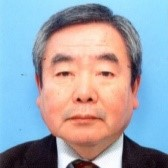Advanced Polyimides and Other High Performance Polymers
A special issue of Polymers (ISSN 2073-4360). This special issue belongs to the section "Polymer Applications".
Deadline for manuscript submissions: closed (30 May 2022) | Viewed by 28275
Special Issue Editors
Interests: advanced polyimides for optoelectric devices; low-k and low dielectric loss polymer materials; polymers for energy and separation technologies; high performance polymers with controlled durability and degradability
Special Issues, Collections and Topics in MDPI journals
Interests: polymeric materials; recision polymerization
Special Issues, Collections and Topics in MDPI journals
2. School of Chemical Sciences, University of Chinese Academy of Sciences, Beijing 100190, China
Interests: high temperature resistant polyimide resin; carbon fiber reinforced composite material; functional epoxy resin; heat-resistant polymer insulation material
Special Issue Information
Dear Colleagues,
For the last three decades, the increasing need in the high-technology industries has been the driving force for the development of new polymeric systems and materials combining thermal, mechanical, and high-temperature resistance or other properties such as high transparency, dimensional stability, chemical stability, and processability. The features of advanced polyimides and other high-performance polymers are now well recognized and used with long-term durability under harsh conditions. New structures originating from the chemical modification of polymer backbones or from the creation of new architectures are under development for advanced technologies for the future. The scope of this Special Issue includes all aspects of the synthesis, fabrication, physico-chemical properties, ultimate properties, processing, and applications of advanced polyimides and other high-performance polymers needed in highly developed technologies. Applications of particular interest include films, membranes, fibers, coatings, adhesives, composite matrices, and active polymers for potential use in sectors such as optoelectronics, energy electronics, telecommunications, transportation, and aerospace.
Prof. Dr. Toshihiko MatsumotoProf. Dr. Der-Jang Liaw
Prof. Dr. Shiyong Yang
Guest Editors
Manuscript Submission Information
Manuscripts should be submitted online at www.mdpi.com by registering and logging in to this website. Once you are registered, click here to go to the submission form. Manuscripts can be submitted until the deadline. All submissions that pass pre-check are peer-reviewed. Accepted papers will be published continuously in the journal (as soon as accepted) and will be listed together on the special issue website. Research articles, review articles as well as short communications are invited. For planned papers, a title and short abstract (about 100 words) can be sent to the Editorial Office for announcement on this website.
Submitted manuscripts should not have been published previously, nor be under consideration for publication elsewhere (except conference proceedings papers). All manuscripts are thoroughly refereed through a single-blind peer-review process. A guide for authors and other relevant information for submission of manuscripts is available on the Instructions for Authors page. Polymers is an international peer-reviewed open access semimonthly journal published by MDPI.
Please visit the Instructions for Authors page before submitting a manuscript. The Article Processing Charge (APC) for publication in this open access journal is 2700 CHF (Swiss Francs). Submitted papers should be well formatted and use good English. Authors may use MDPI's English editing service prior to publication or during author revisions.
Keywords
- advanced polyimides
- colorless and thermally stable polymer films
- high Tg and low CTE polymers
- ultrahigh modulus and strength polymers
- polymers for electronic/optoelectronic applications
- polymer materials for energy electronics
- polymer micro- and nano-composites
- structure–property relationship








